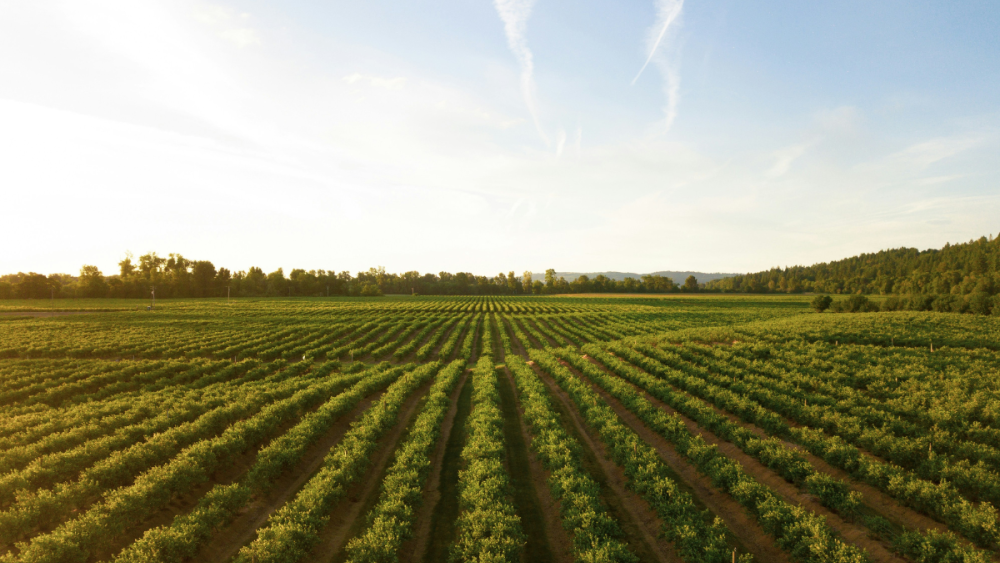Research teams receive $1.1 million to study microbiomes in agriculture | Penn State University


Two Penn State-Led Research Teams Receive Funding for Microbiome Studies in Agriculture

Introduction
Two research teams led by Penn State have been awarded funding from the U.S. Department of Agriculture’s National Institute of Food and Agriculture. The grants, totaling $1.1 million, will support projects investigating the impact of microbiomes on disease dynamics in agriculture. These projects align with the Sustainable Development Goals (SDGs) set by the United Nations.
Project 1: Microbiome Associated with Mushroom Development and Disease Suppression
Fabricio Vieira, a postdoctoral scholar in the Department of Plant Pathology and Environmental Microbiology, will lead a project focused on understanding the microbiome associated with mushroom development and disease suppression.
Objective:
- Identify microbes and biochemicals that contribute to mushroom development and disease suppression
- Determine the best ways to utilize these pathways
- Establish methods to develop microbe communities for disease suppression in substrate environments
Significance:
- Improvement of agricultural production systems
- Enhancement of human well-being and environmental health
- Implications beyond commercial mushroom production, as fungi play a significant role in agronomic crop production and nutrient cycling
Project 2: Microbiome of Disease-Suppressive Soils
Francisco Dini-Andreote, an assistant professor of phytobiomes, will lead a project investigating the microbiome of disease-suppressive soils.
Objective:
- Identify microbes and functions that control soil-borne plant pathogens
- Evaluate the resilience of disease-suppressive soils to agricultural practices and conditions
Significance:
- Soil-borne plant pathogens cause major yield losses in crop production
- Development of alternative control measures is critical for a stable food supply system
- Exploration of novel microbial-mediated mechanisms of pathogen control in disease-suppressive soils
- Promotion of sustainable strategies to reduce chemical inputs and increase crop protection
Collaborators and Funding
Carolee Bull, Kevin Hockett, John Pecchia, and Eoin O’Connor are also part of the research teams. Vieira’s original project received funding from the Huck Innovation and Transformational Seed Fund, which provided the preliminary data necessary to secure the $800,000+ grant.
SDGs, Targets, and Indicators
1. Which SDGs are addressed or connected to the issues highlighted in the article?
- SDG 2: Zero Hunger
- SDG 3: Good Health and Well-being
- SDG 6: Clean Water and Sanitation
- SDG 15: Life on Land
2. What specific targets under those SDGs can be identified based on the article’s content?
- SDG 2.4: By 2030, ensure sustainable food production systems and implement resilient agricultural practices that increase productivity and production, that help maintain ecosystems, that strengthen capacity for adaptation to climate change, extreme weather, drought, flooding and other disasters, and that progressively improve land and soil quality.
- SDG 3.3: By 2030, end the epidemics of AIDS, tuberculosis, malaria and neglected tropical diseases and combat hepatitis, water-borne diseases and other communicable diseases.
- SDG 6.3: By 2030, improve water quality by reducing pollution, eliminating dumping and minimizing release of hazardous chemicals and materials, halving the proportion of untreated wastewater and substantially increasing recycling and safe reuse globally.
- SDG 15.1: By 2020, ensure the conservation, restoration and sustainable use of terrestrial and inland freshwater ecosystems and their services, in particular forests, wetlands, mountains and drylands, in line with obligations under international agreements.
3. Are there any indicators mentioned or implied in the article that can be used to measure progress towards the identified targets?
- Indicator for SDG 2.4: Adoption of sustainable agricultural practices, such as the utilization of microbiomes to improve agricultural production systems and soil quality.
- Indicator for SDG 3.3: Reduction in the prevalence and impact of soil-borne plant pathogens, leading to improved crop health and reduced yield losses.
- Indicator for SDG 6.3: Improvement in water quality in agricultural systems through the use of microbiomes to suppress pathogens and reduce the need for chemical inputs.
- Indicator for SDG 15.1: Conservation and restoration of disease-suppressive soils, leading to enhanced ecosystem services and sustainable use of terrestrial ecosystems.
4. Table: SDGs, Targets, and Indicators
| SDGs | Targets | Indicators |
|---|---|---|
| SDG 2: Zero Hunger | 2.4: By 2030, ensure sustainable food production systems and implement resilient agricultural practices that increase productivity and production, that help maintain ecosystems, that strengthen capacity for adaptation to climate change, extreme weather, drought, flooding and other disasters, and that progressively improve land and soil quality. | Adoption of sustainable agricultural practices, such as the utilization of microbiomes to improve agricultural production systems and soil quality. |
| SDG 3: Good Health and Well-being | 3.3: By 2030, end the epidemics of AIDS, tuberculosis, malaria and neglected tropical diseases and combat hepatitis, water-borne diseases and other communicable diseases. | Reduction in the prevalence and impact of soil-borne plant pathogens, leading to improved crop health and reduced yield losses. |
| SDG 6: Clean Water and Sanitation | 6.3: By 2030, improve water quality by reducing pollution, eliminating dumping and minimizing release of hazardous chemicals and materials, halving the proportion of untreated wastewater and substantially increasing recycling and safe reuse globally. | Improvement in water quality in agricultural systems through the use of microbiomes to suppress pathogens and reduce the need for chemical inputs. |
| SDG 15: Life on Land | 15.1: By 2020, ensure the conservation, restoration and sustainable use of terrestrial and inland freshwater ecosystems and their services, in particular forests, wetlands, mountains and drylands, in line with obligations under international agreements. | Conservation and restoration of disease-suppressive soils, leading to enhanced ecosystem services and sustainable use of terrestrial ecosystems. |
Source: psu.edu








